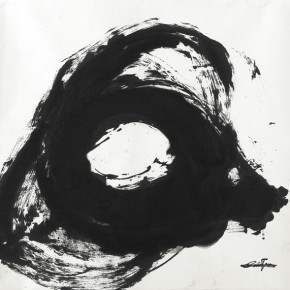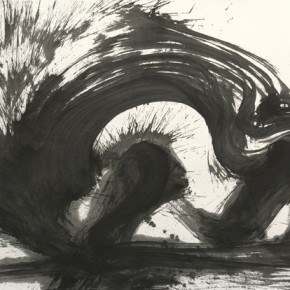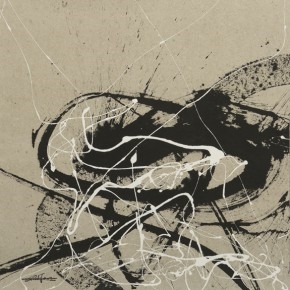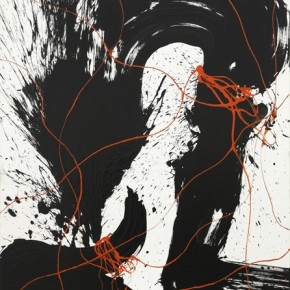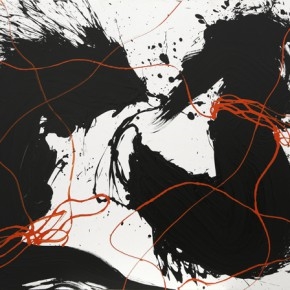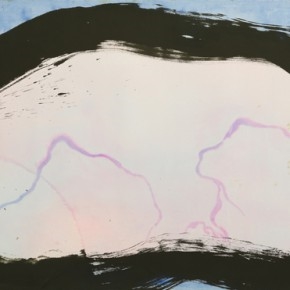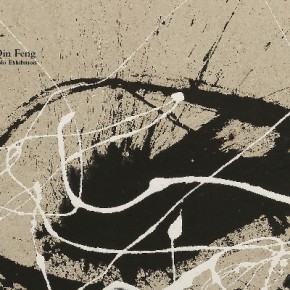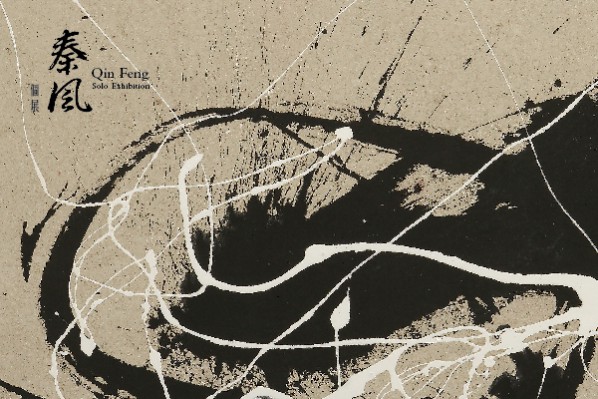
Born in 1961 in Xinjiang Province, Qin Feng is a leading international ink artist and one of the foremost representatives of China's avant-garde movement. He studied mural painting at the Shandong University of Art and Design in the early 1980s and was one of only two people in Shandong Province who radically experimented with imported styles of contemporary art during that period. In 1996, Qin moved to Berlin where he began to synthesize Western modernism and the Chinese ink-painting tradition. He founded the Museum of Contemporary Art in Beijing in 2007 and began teaching and serving as graduate advisor at the Central Academy of Fine Arts in Beijing. A year later, he became a research associate at the Fairbank Centre for Chinese Studies at Harvard University. His works are collected by the British Museum, the Metropolitan Museum of Art and Museum of Fine Arts, Boston, and more.
The Chinese roots of Qin Feng's works represent only one aspect of his artistic groundings. Almost from the beginning at Shandong, he had access to the practices of western artists. Although avant-garde in spirit, his work mainly eschews the attractions of early modernist Futurism and Cubism, Dada, Surrealism, and Popo Art. Later on, while living in Germany between the mid and late 1990s, exposure to the German Abstract Expressionism may have indirectly influenced the direction of some of his work. Since 2000, Qin Feng’s art have become more visualized. Images of “Water,” “Circle,” and “Square” have been incorporated in his paintings as a continuation of the emptiness and spirituality within ancient Chinese ink drawings. Qin's bold brushstrokes lyrically combine the gestural impulses of Western action painting with the tradition of Chinese calligraphy painting. His interest in balancing the dynamic between positive and negative space within his compositions mirrors his interest in exploring the delicate harmony between humans and nature. Unorthodox materials, such as the coffee and tea used in the Desire Landscape series, at once assert a break with tradition while also serving as a reminder of two cultural poles at play.
In Peng Feng’s “Postmodern Ink of Qin Feng”, he explains: “The power of Qin Feng’s art comes from the thorough communication with rich ancient civilization and from the unrest burst of primitive impulse. If ancient civilization could blur us in the Apollonian brightness, primitive impulse would drench us in the Dionysian ecstasy. Qin Feng splits his works into Civilization Landscape and Desire Scenery, which are conflict and concession between civilization and desire both existed in mankind. That is, civilization lost impetus without lust, and desire would corrupt if not be ushered by civilization. Qin Feng is good at assimilating power of ancient civilization and primitive impulse, thus rendering his works hallucinating.”
His exhibition in Taipei will showcase Qin Feng’s “Desire Scenery”, “Civilization Landscape”, and the most recent “Humanistic Nature” series. With ink language as root, Qin uses various media to convey different intellectual and cultural facets, while the repetitive circular symbol contains philosophical wisdom unique to Eastern culture. Qin’s works attempt to extend from plane to spacial and installation space, though not through stacking and adding, but through brushstrokes to form a powerful field that embraces the viewer. If we were to compare his work with music, his “scenery” is like a symphony that intertwines human emotions, desires, and self-control, or as the Zen Buddhism saying: “Accomplishing awakening by realizing the original nature and by pointing out the human mind directly.” Qin Feng’s solo exhibition will be on display until 28th February, 2016.
About the Artist:
Recent exhibitions at: Shanghai Himalayas Museum (Shanghai), Museum artpavillon-st-urban (Switzerland), H?tel de Ville (Paris), Bruce Museum (Connecticut), Shanghai Art Museum (Shanghai), Frost Art Museum (Miami), Taida Contemporary Art Museum (Tianjin), Hubei Museum of Art (Wuhan), Museum of Modern Art (New York), Shanghai Duolun Museum of Modern Art (Shanghai), Museum of Fine Arts (Boston), The Israel Museum (Jerusalem), The Metropolitan Museum of Art (New York), Louisiana Museum of Modern Art (Denmark).
Public collections:
British Museum, UK / The Metropolitan Museum of Art, USA / Museum of Fine Arts, Boston, USA / Pacific Asia Museum, USA / Ford Foundation, USA / MacDowell Colony, USA / Fogg Art Museum of Harvard University, USA / Yale University Art Gallery, USA / Smith College Museum of Art, USA / Crow Collection of Asian Art Museum, USA / National Arts Foundation, France / Annie Wong Art Foundation, Hong Kong, China
About the exhibition
Date: 2016-01-09 ~ 2016-02-28
Opening: 2016.1.9 (Sat) 3pm
Venue: Asia Art Center Taipei II
Address: No.177, Sec. 2, Jianguo S. Rd., Taipei 106, Taiwan
Courtesy of the artist and Asia Art Center.


